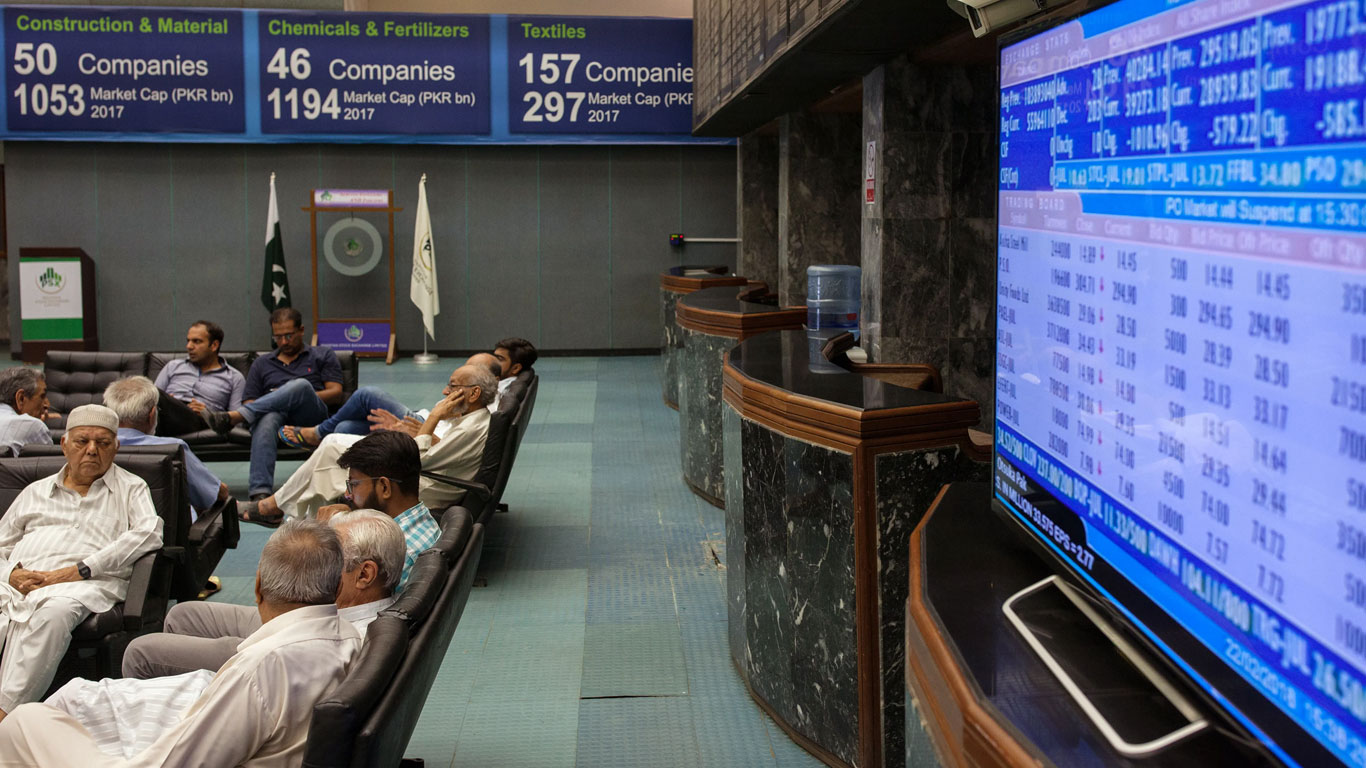The Pakistan Stock Exchange (PSX) saw a dramatic sell-off on Wednesday as rising global trade tensions fueled investor fears, sending the benchmark KSE-100 Index down by 1,379.28 points, or 1.19%, closing at 114,153.15.
The market remained under selling pressure during the day, reaching an intraday low of 112,891.48 points as panic among traders took hold in the wake of an escalating global trade war.
Segments across the board suffered, with heavy losses in automobile assemblers, cement, chemicals, commercial banks, oil and gas exploration entities, power generation, and refineries. Major stocks like MARI, POL, PPL, PSO, SNGPL, SSGC, ARL, MCB, NBP, and UBL all closed the day in the red.
The downturn comes just a day after the KSE-100 Index had shown signs of recovery, adding 623 points on Tuesday. However, Wednesday’s sharp decline wiped out those gains as fears stemming from the global stage weighed heavy on investor sentiment.
Global markets didn’t fare any better. After US President Donald Trump slapped a 104% tariff on Chinese imports, major Asian stock indexes tumbled. Concerns of capital flight from US treasury securities raised fresh doubts, causing the dollar to fall and triggering a sharp sell-off in oil, which dropped by nearly 4%.
The S&P 500 Index faced one of its most volatile swings in 50 years, ending with a loss of 4.2% after briefly starting the day in the green. In just four days, nearly $5.8 trillion in market value was wiped off the US stock market—marking one of the most damaging periods since the 1950s.
In Asia, Japan’s Nikkei reversed a 6% morning gain to close 3.6% lower, while Taiwan’s stock exchange plunged 4.6%, despite government efforts to stabilize the market with a $15 billion fund. The MSCI’s broadest index of Asia-Pacific shares outside Japan also dropped 1.9%.
JP Morgan analysts cautioned that the rising tariffs against China have the potential to be severe enough to drive the world economy into a full-fledged recession. With neither the US nor China willing to give way, financial markets continue to be tense, and investors prepare for further volatility in the coming days.






